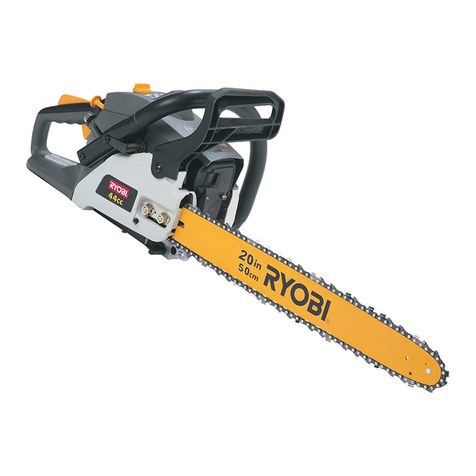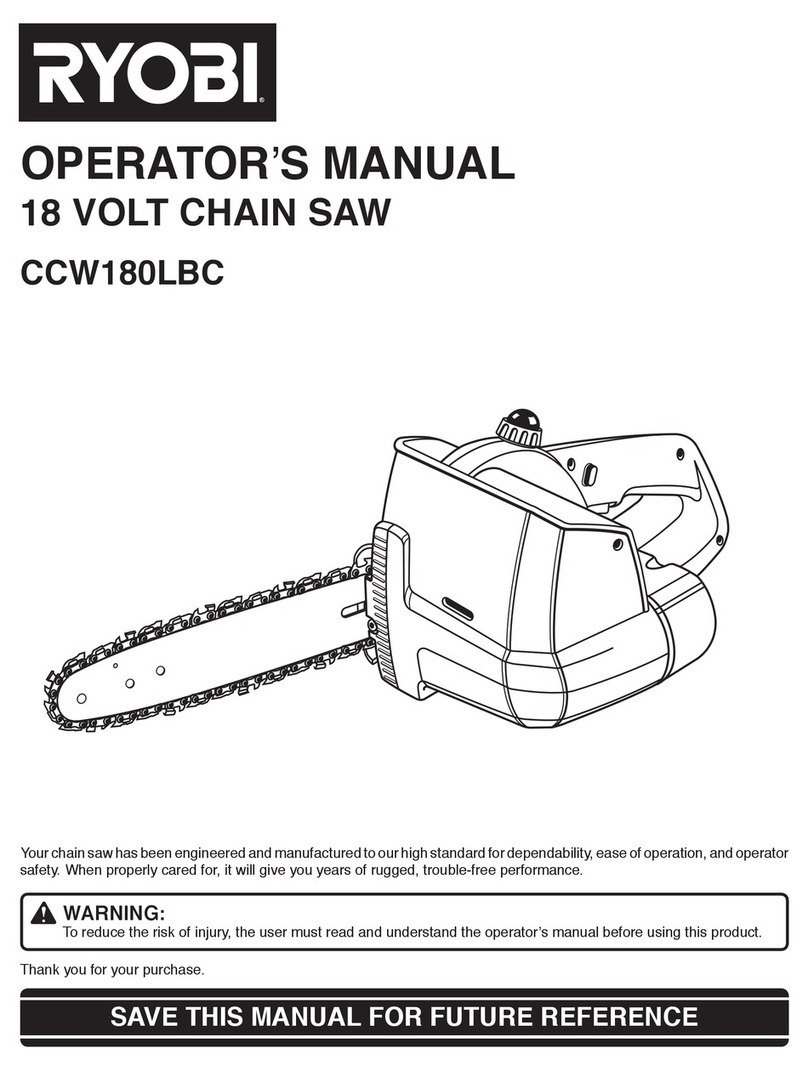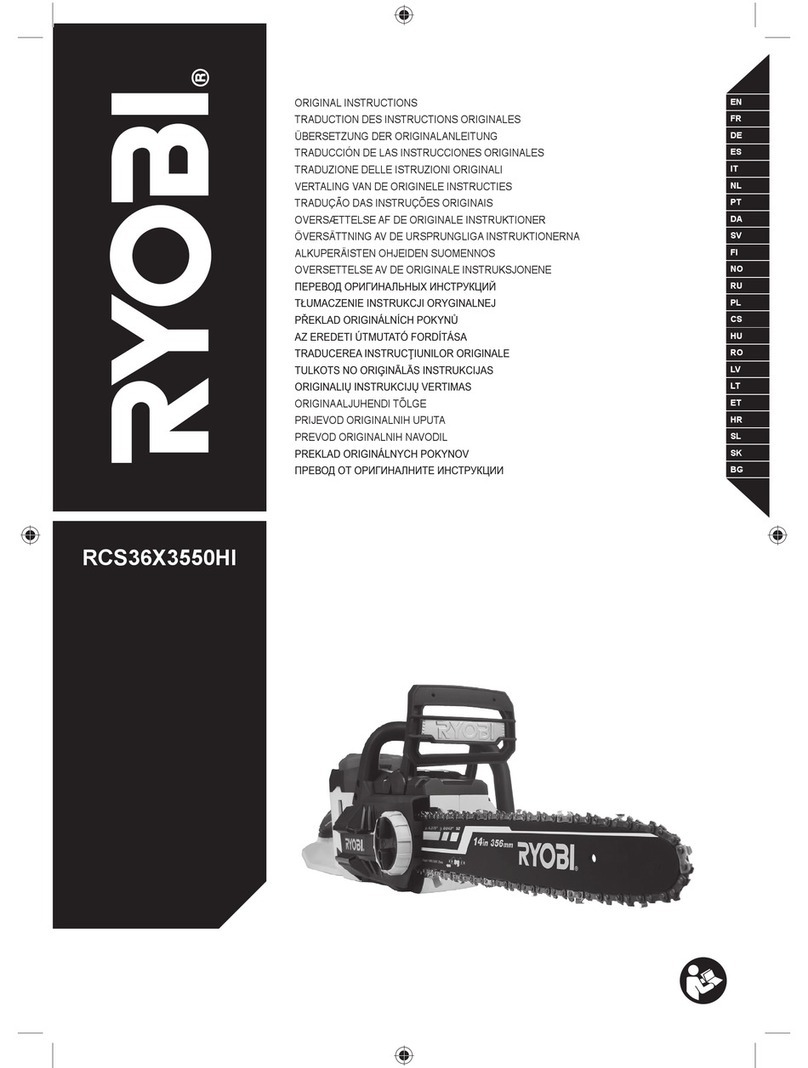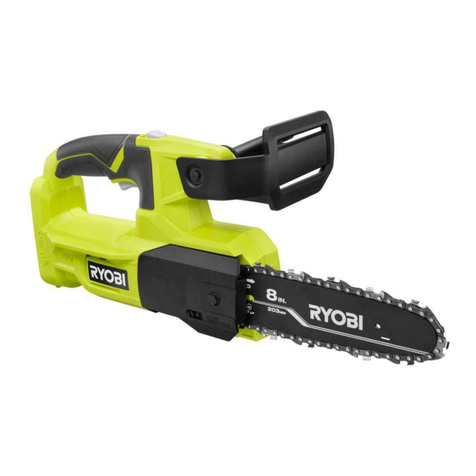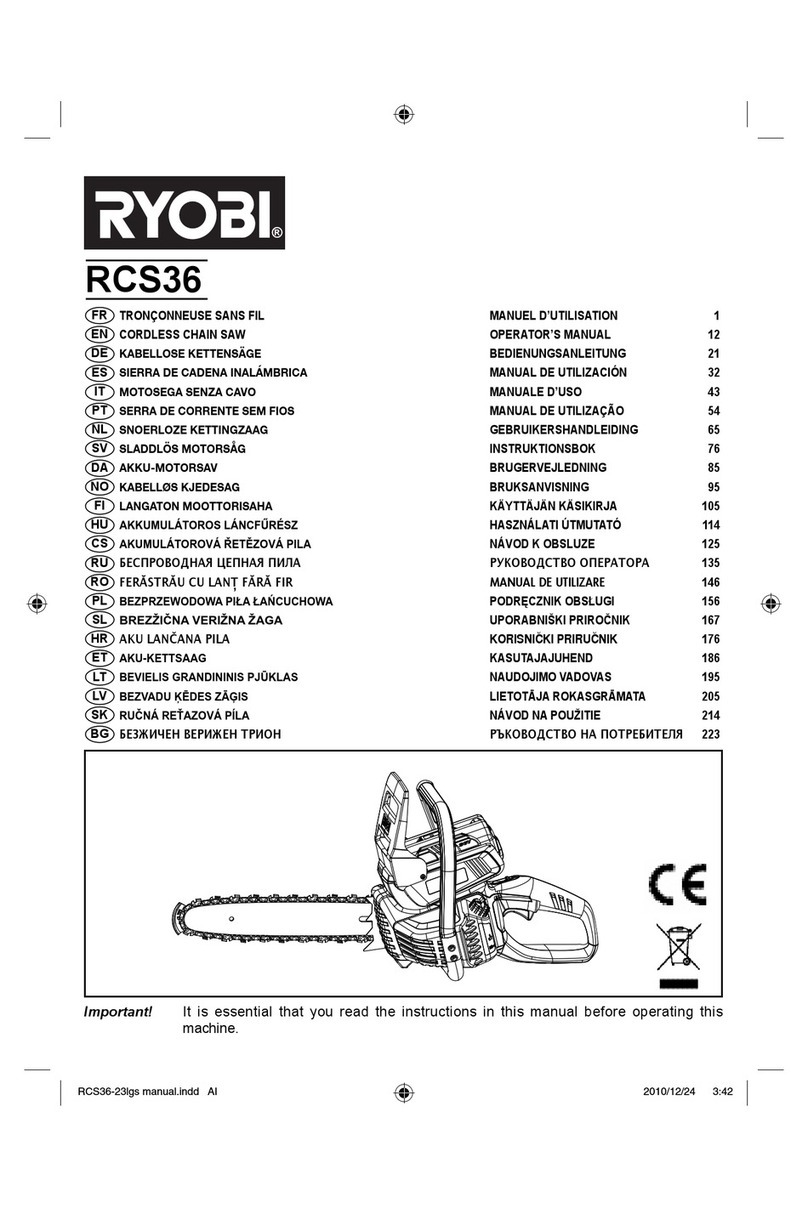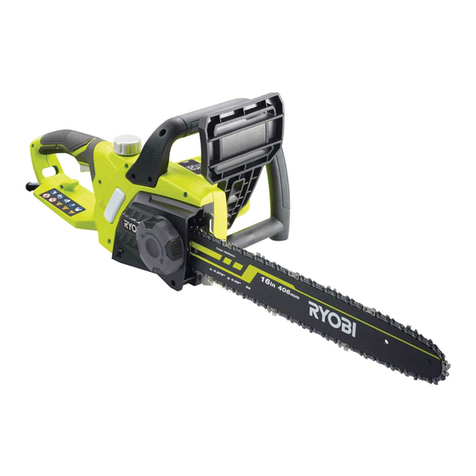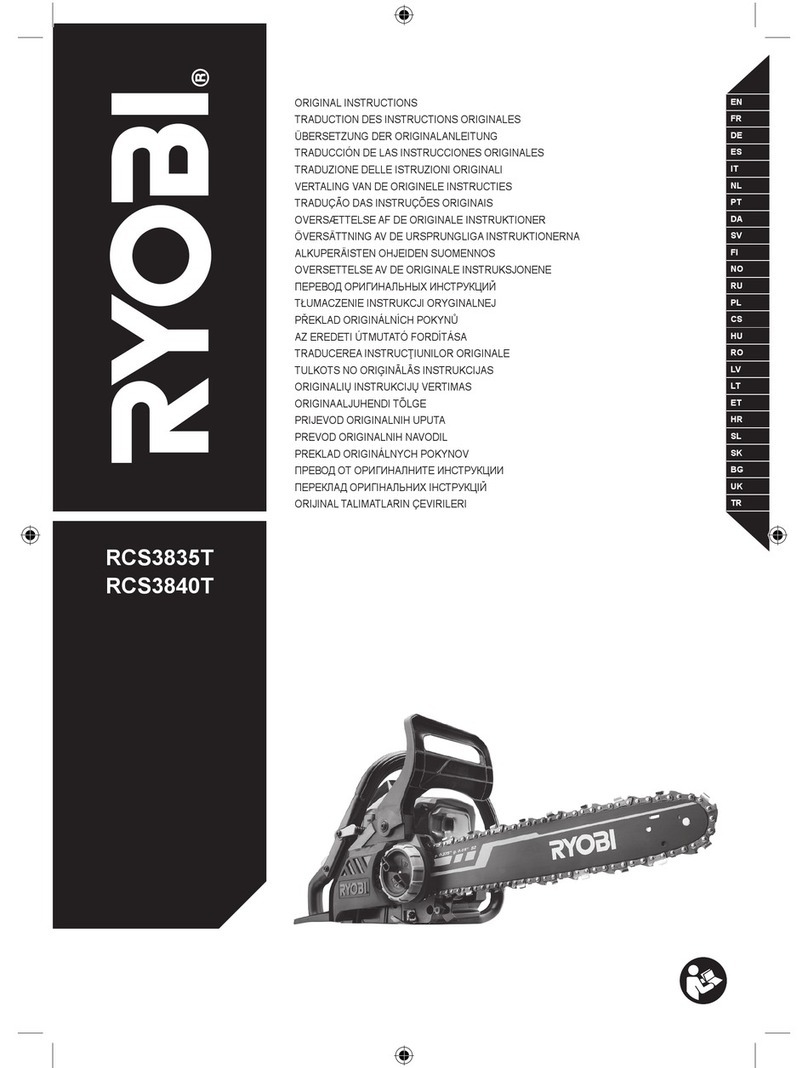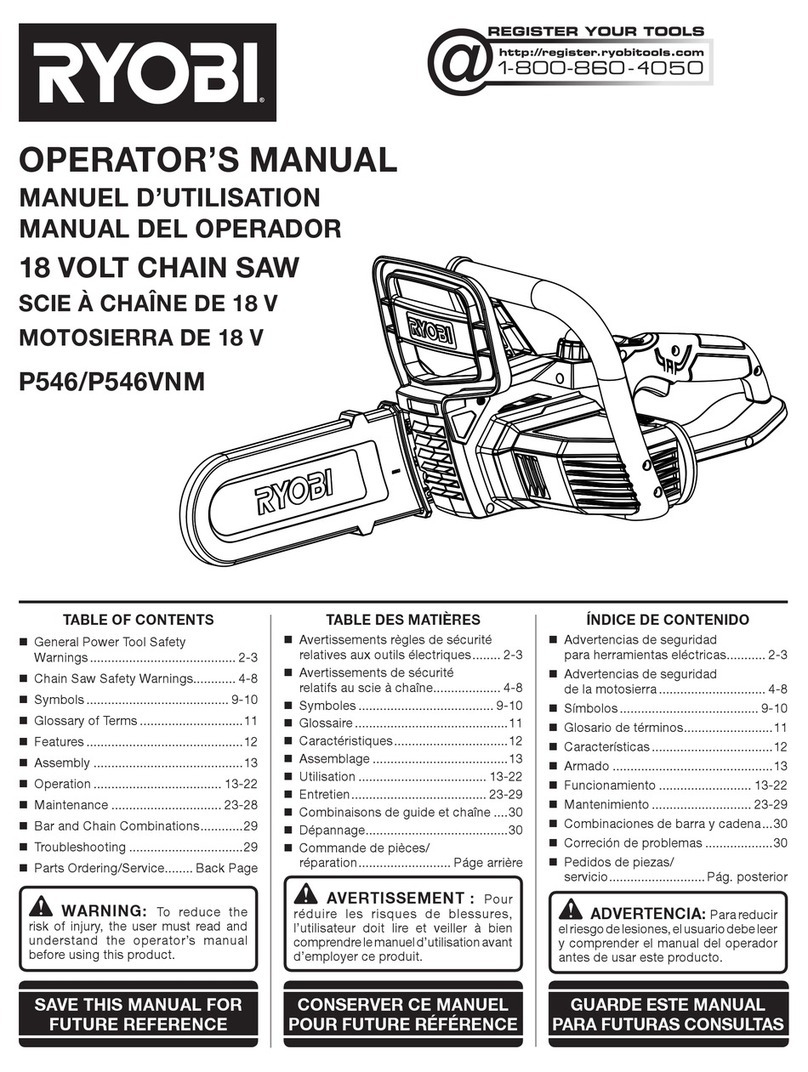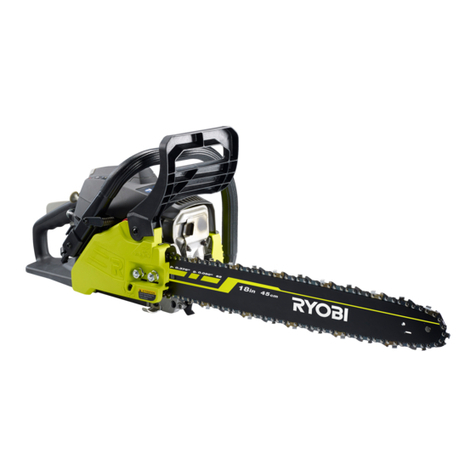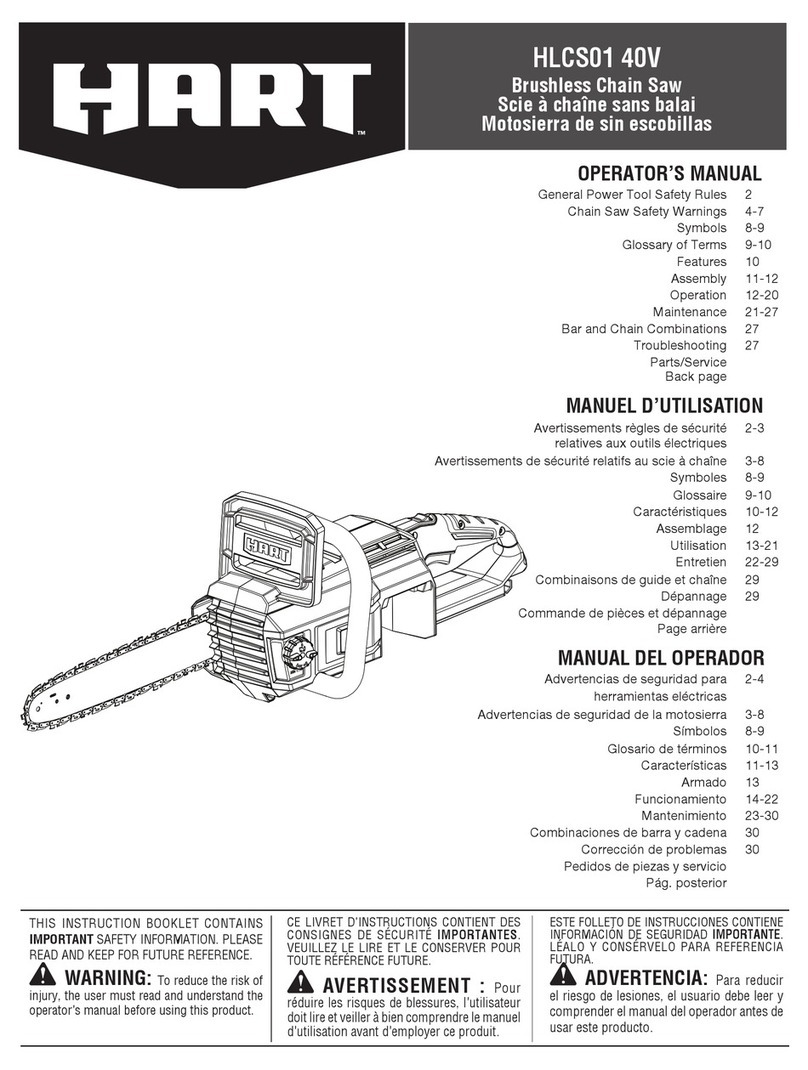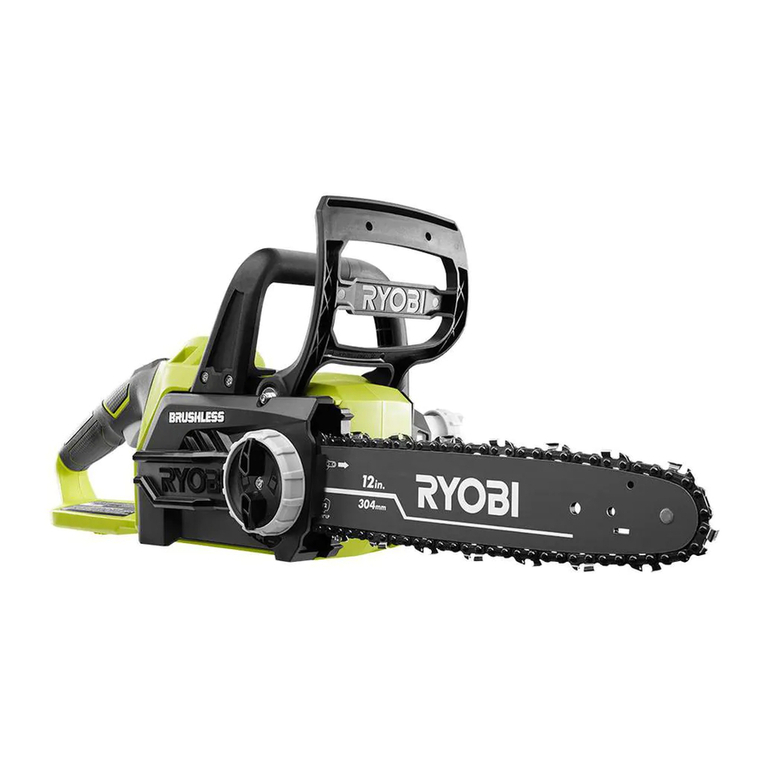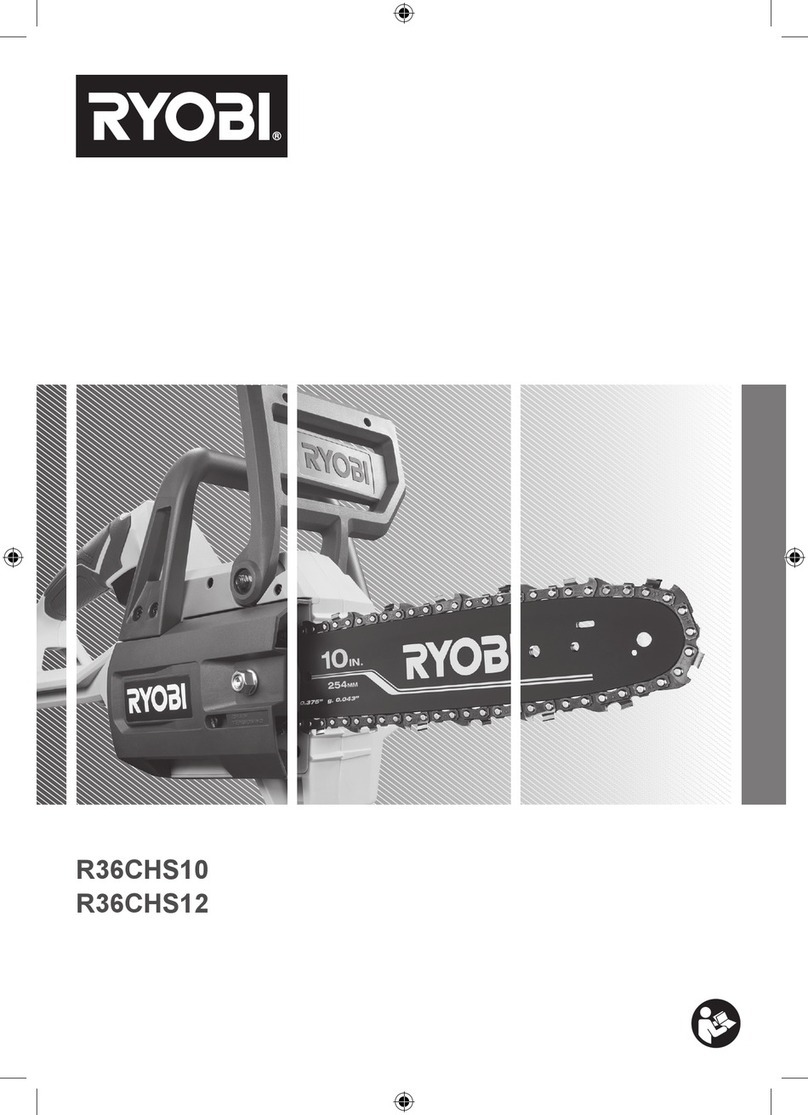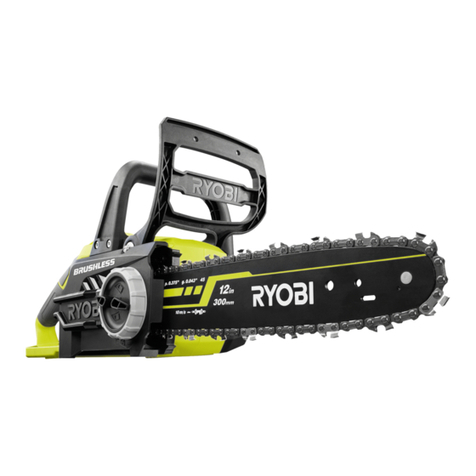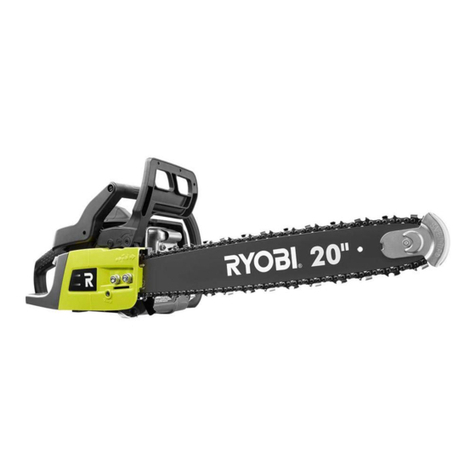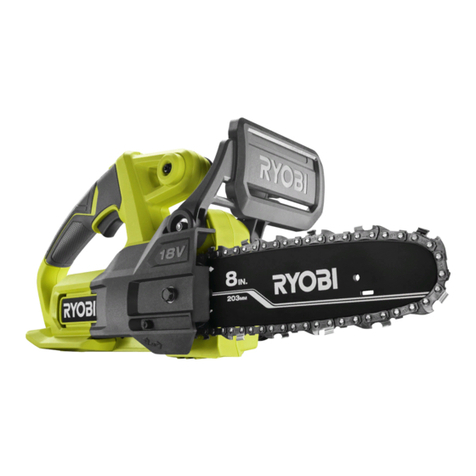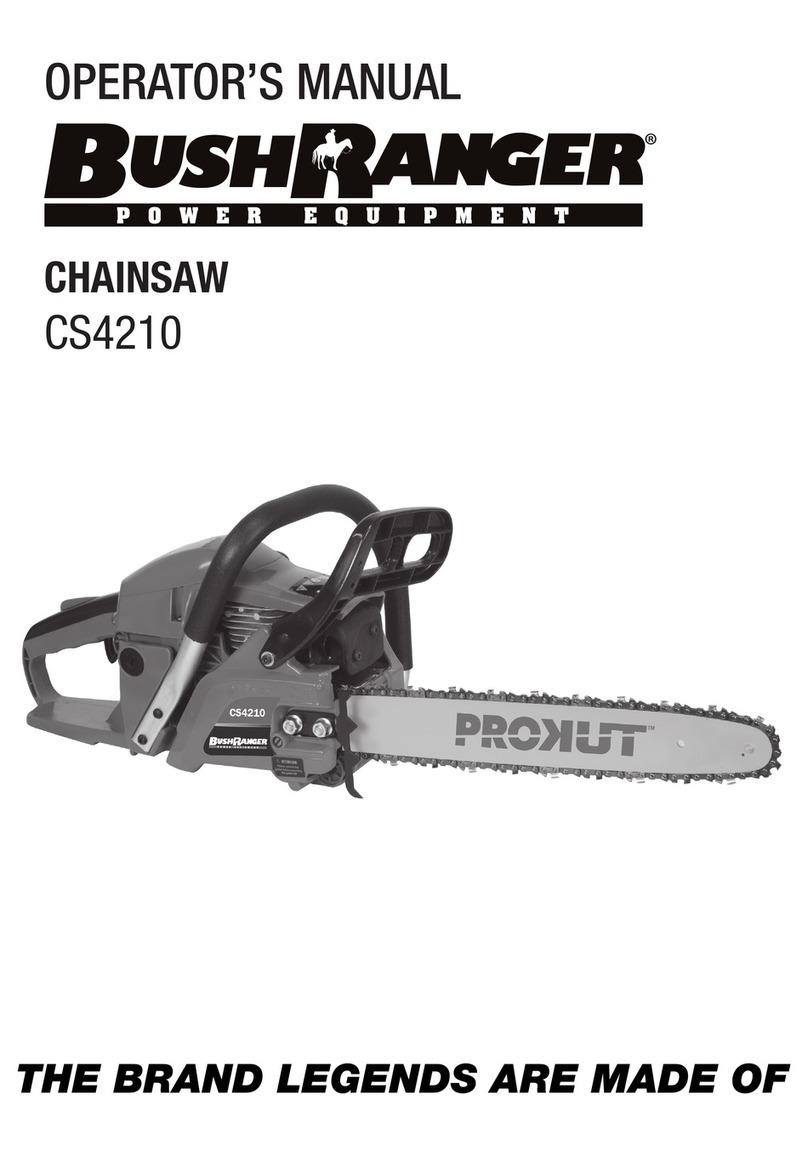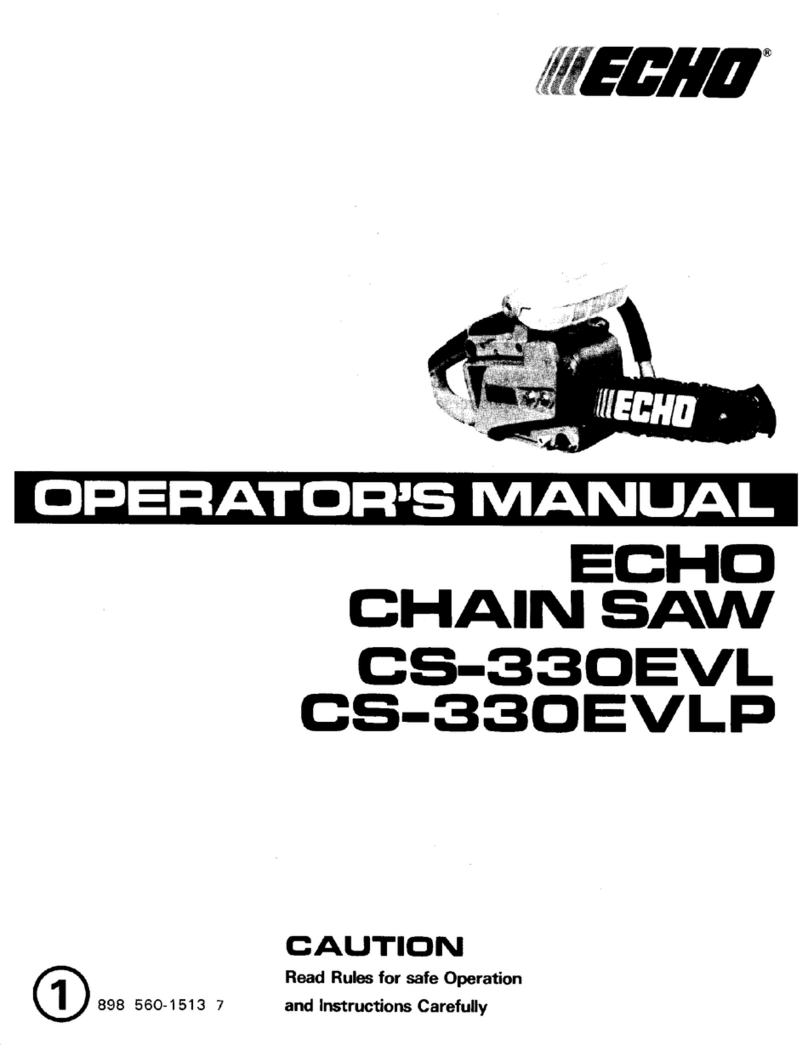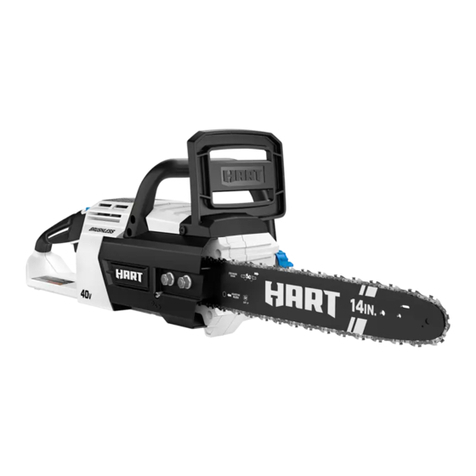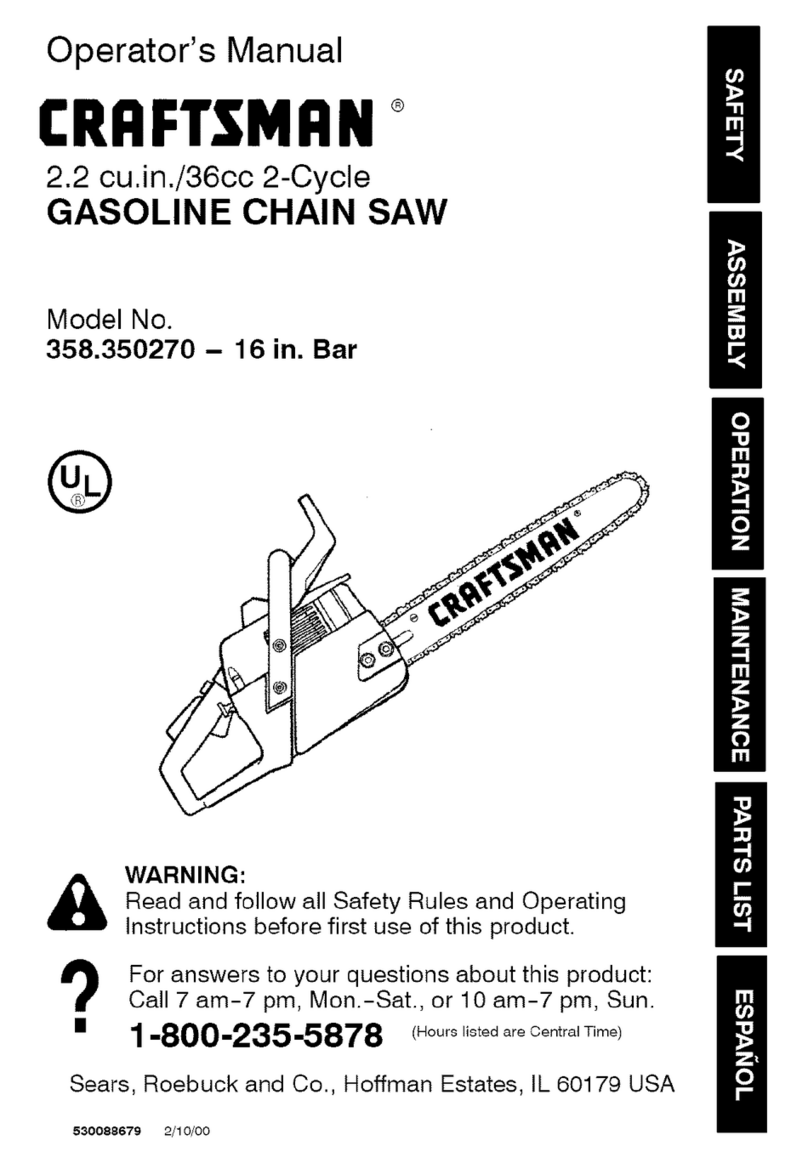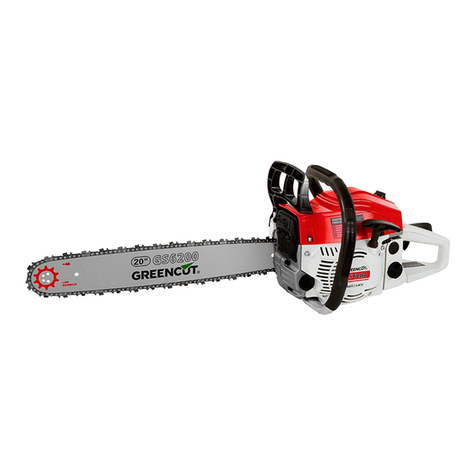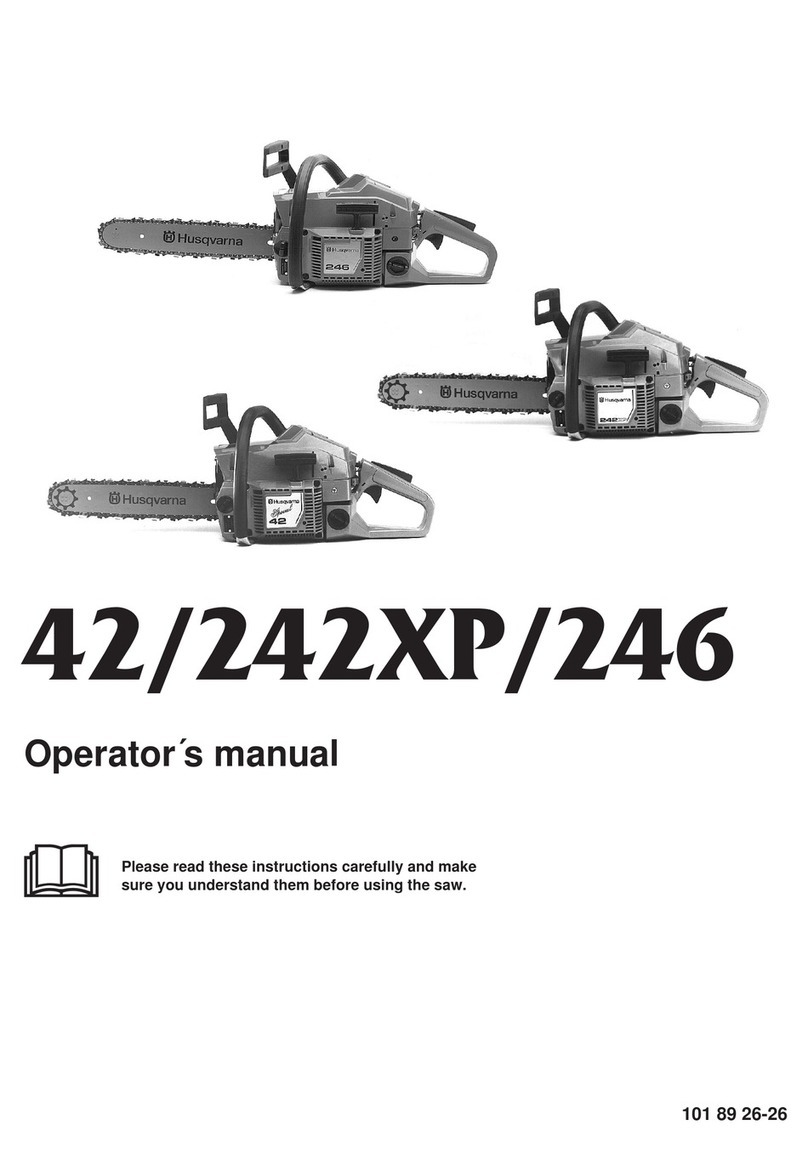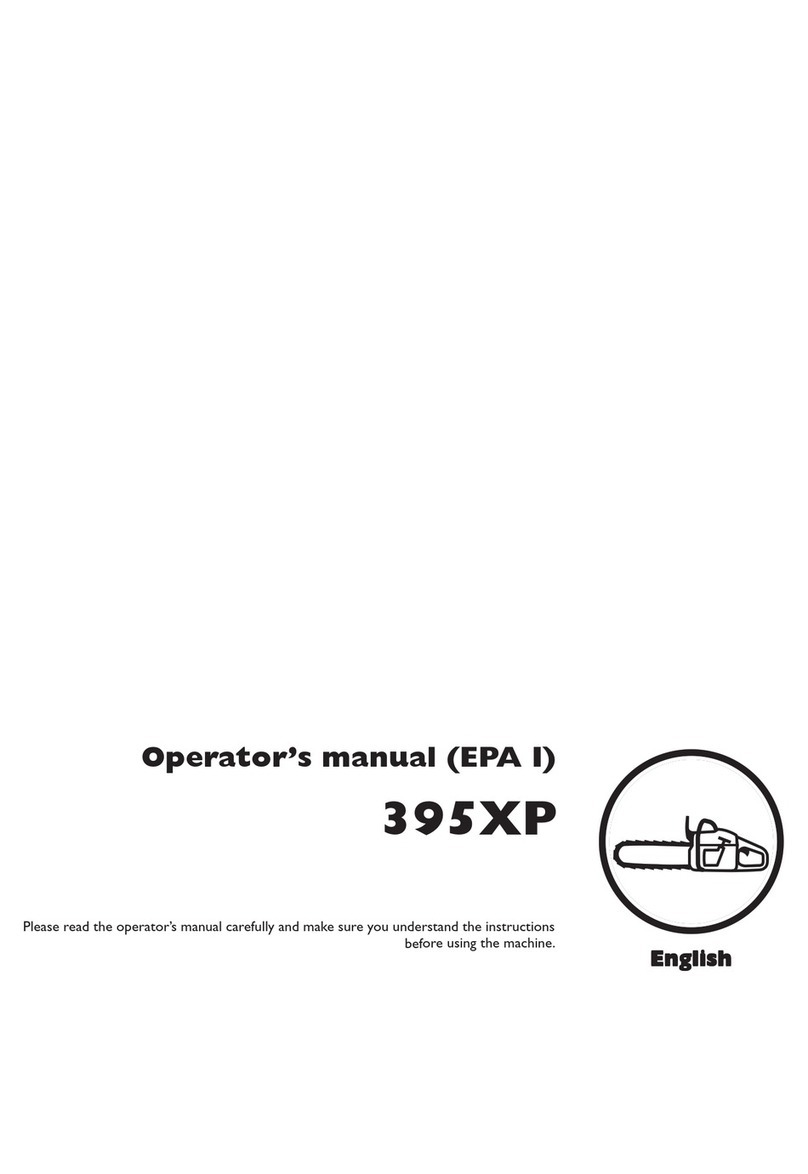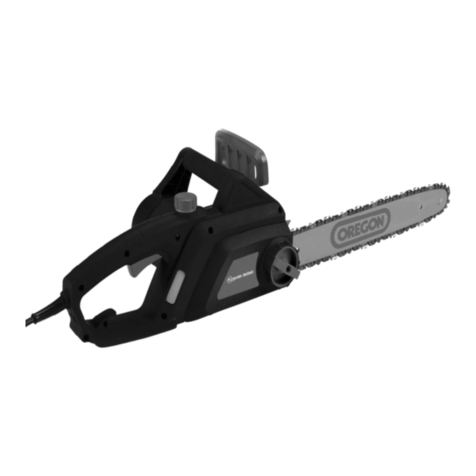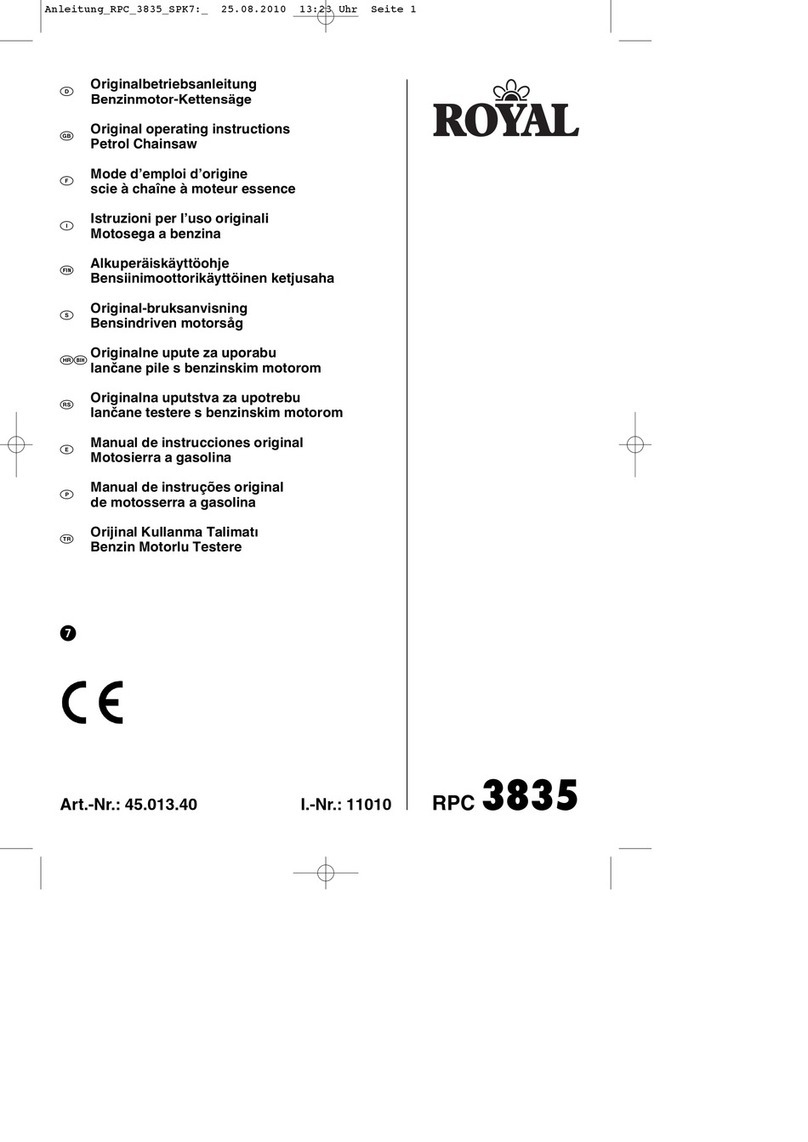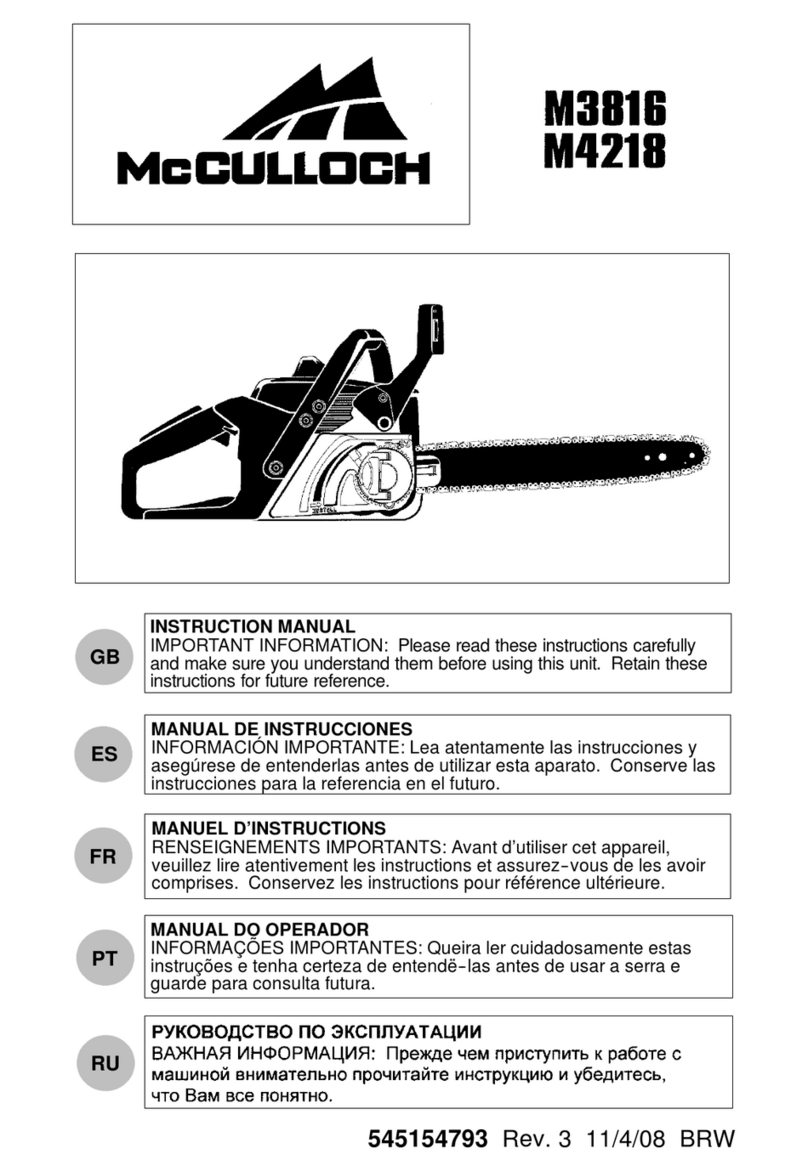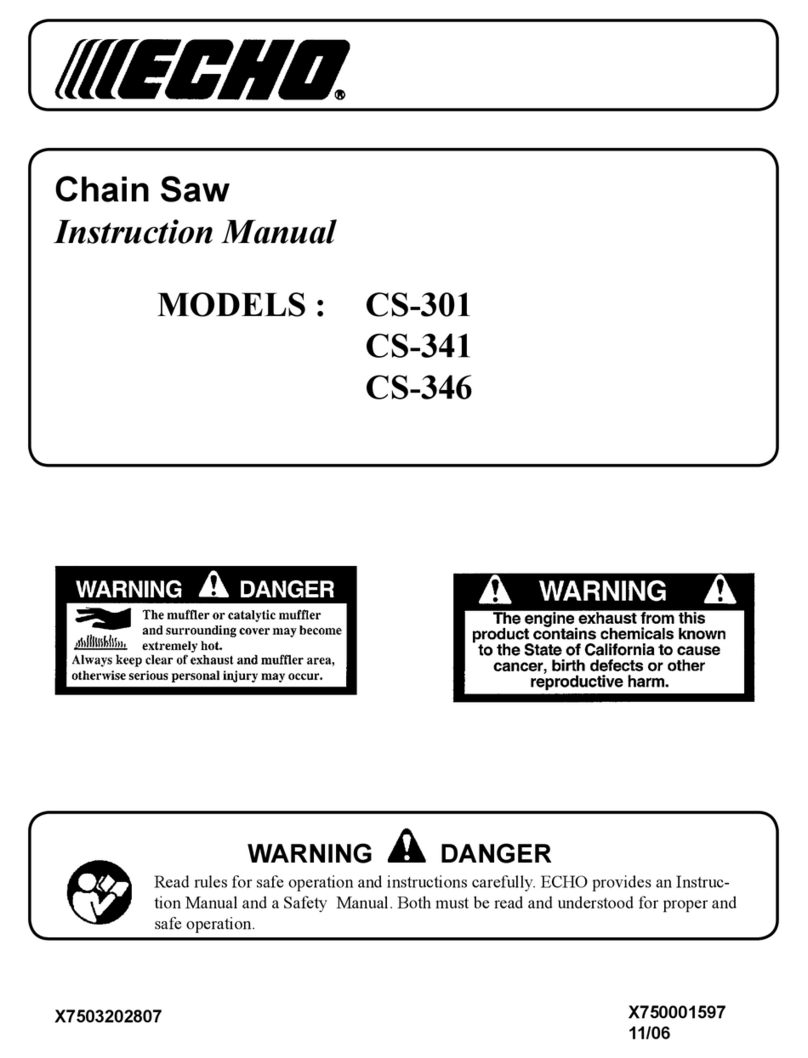
4
Pinching the saw chain along the top of the guide bar may
push the guide bar rapidly back towards the operator.
Either of these reactions may cause you to lose control of
the saw which could result in serious personal injury. Do
not rely exclusively upon the safety devices built into your
saw. As a chainsaw user, you should take several steps to
keep your cutting jobs free from accident or injury.
Kickback is the result of tool misuse and/or incorrect
operating procedures or conditions and can be avoided by
taking proper precautions as given below:
■Maintain a firm grip, with thumbs and fingers
encircling the chainsaw handles, with both hands
on the saw and position your body and arm to allow
you to resist kickback forces. Kickback forces can
be controlled by the operator, if proper precautions are
taken. Do not let go of the chainsaw.
■Do not overreach and do not cut above shoulder
height. This helps prevent unintended tip contact and
enables better control of the chainsaw in unexpected
situations.
■Use only replacement bars and chains that are
specified by the manufacturer. Incorrect replacement
bars and chains may cause chain breakage and/or
kickback.
■Follow the manufacturer’s sharpening and
maintenance instructions for the saw chain.
Decreasing the depth gauge height can lead to
increased kickback.
ADDITIONAL CHAINSAW SAFETY WARNINGS
■Cut logs on a saw-horse or cradle when operating the
product for the first time.
■Ensure that all guards, handles, and spiked bumper are
properly fitted and are in good condition.
■Persons using the product should be in good health.
The product is heavy, so the operator requires to be
physically fit. The operator should be alert, have good
vision, mobility, balance, and manual dexterity. If there
is any doubt, do not operate the product.
■Do not start using the product until you have a clear
work area, secure footing, and a planned retreat path
away from a falling tree.
■Beware of the emission of lubricant mist and saw dust.
Wear a mask or respirator, if required.
■Do not cut vines and small undergrowth (less than 75
mm in diameter).
■Always hold the chainsaw with both hands when
operating the saw. Use a firm grip with thumbs and
fingers encircling the chainsaw handles. Right hand
must be on the rear handle and left hand on the front
handle.
■Before starting the product, make sure that the saw
chain is not contacting any object.
■Do not modify the product in any way or use it to power
any attachments or devices that are not recommended
by the manufacturer for the product.
■There should be a first-aid kit containing large
wound dressings and a means to summon attention
(e.g., whistle) close to the operator. A larger more
comprehensive kit should be reasonably nearby.
■Wear a helmet at all times when operating the product.
A helmet, equipped with mesh visor, can help reduce
the risk of injury to the face and the head if kickback
occurs.
■An incorrectly tensioned chain can jump off the guide
bar and could result in serious injury or fatality. The
length of chain depends on the temperature. Check the
tension frequently.
■You should get used to your new chainsaw by making
simple cuts on securely supported wood. Do this
whenever you have not operated the saw for some
time.
■To reduce the risk of injury associated with contacting
moving parts, always stop the product, apply the chain
brake, remove the battery pack, and make sure that all
moving parts have come to a stop before:
–cleaning or clearing a blockage
–leaving the product unattended
–installing or removing attachments
–checking, performing maintenance, or working on
the product
■The size of the work area depends on the job being
performed as well as the size of the tree or work piece
involved. For example, felling a tree requires a larger
work area than making other cuts, i.e., bucking cuts,
etc. The operator needs to be aware and in control of
everything happening in this work area.
■Do not cut with your body in line with the guide bar and
chain. If you do experience kickback, this helps prevent
the chain from coming into contact with your head or
body.
■Do not use a back-and-forward sawing motion, let the
chain do the work, keep the chain sharp and do not try
to push the chain through the cut.
■Do not put pressure on the saw at the end of the cut.
Be ready to take on the weight of the saw as it cuts free
from the wood. Failure to do so could result in possible
serious personal injury.
■Do not stop the saw in the middle of a cutting operation.
Keep the saw running until it is removed from the cut.
Push and pull
The reaction force is always opposite to the direction the
chain is moving. Thus, the operator must be ready to
control the tendency for the machine to pull away (forward
motion) when cutting on the bottom edge of the bar and the
push backwards (towards the operator) when cutting along
the top edge.
Saw jammed in the cut
Stop the chainsaw, and engage the chain brake. Do not
try to force the chain and bar out of the cut as this is likely
to break the chain, which may swing back and strike the
operator. This situation normally occurs because the wood
is incorrectly supported and forcing the cut to close under
compression thereby pinching the blade. If adjusting the
support does not release the bar and chain, use wooden
wedges or a lever to open the cut and release the saw.
Never try to start the chainsaw when the guide bar is
already in a cut or kerf.
